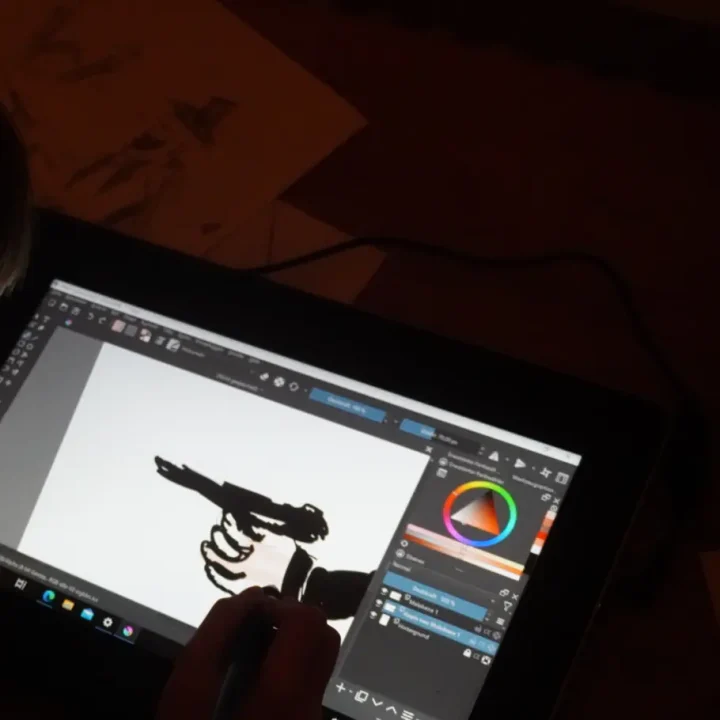Replacing defective BGA-Chip with wires on Wacom Cintiq Companion 2 tablet
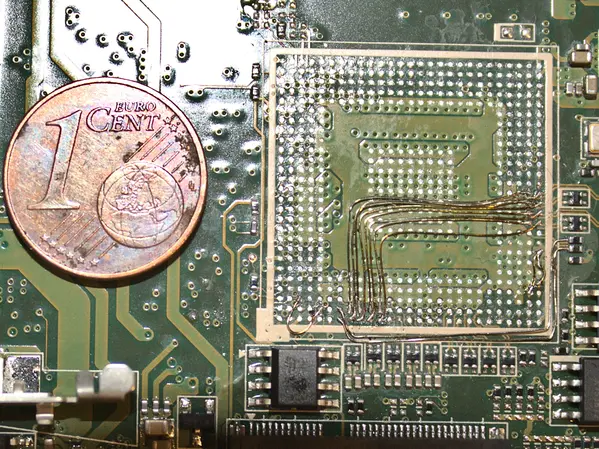
A PI-Crew member bought a used Wacom Cintiq Companion 2 in good condition for his 9 years old son who is really into arts. Everything was fine but after an upgrade to Windows 10 the screen showed some artefacts and eventually went completely dark.
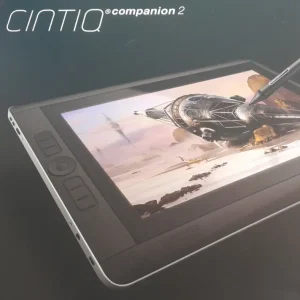
Soon after that he found out that a lot of people have already reported this issue and that there have been some successful attempts on fixing it. It was most definitely an hardware issue.
He asked the PI-Crew for help! Neutrino – PI veteran and electronic technician in the field of soldering and microelectronics – was hesitating first and not responding. But after two days thinking about the difficult fix he wanted to take up the challange and try to fix this issue.
A great device…
The Wacom Cintiq Companion 2 was introduced in 2015 as a complete mobile workstation that runs on Windows (or Linux… or as a hackintosh). Beside a four finger touch input it also has the Wacom pen technology built into it so you can expect a rather good experience when working with digital art software like Krita, Clip Studio Paint or Photoshop. To sum it up, these devices are compact and could be used as great devices for hacking/tinkering with linux too!
…with a major flaw!
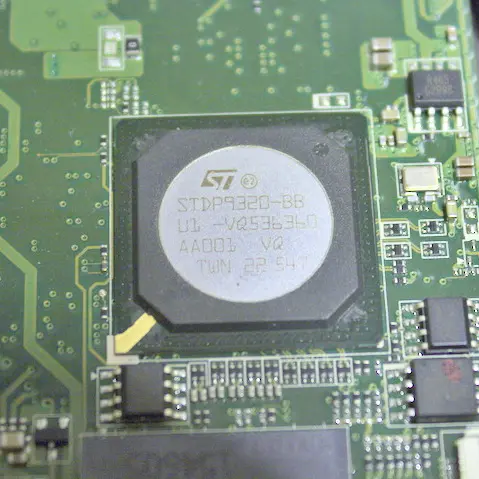
But this model has a major flaw: The video controller chip on it will die one day or another and the screen will turn dark.
The BGA chip is used to switch between the companion mode and the standalone mode. In companion mode you connect the tablet to another PC via a proprietary cable (HDMI+USB) and it will function as a pen display. In standalone mode the display is linked to the internal hardware.
Apparently due to a claimed design flaw in the Athena STDP9320, the chip will die after some time and stops routing the internal video signal to the screen in standalone mode (for example see this post on Wacom forum [archive]).
The Fix!
Luckely the reddit user maoukiero reverse engineered the routing of the video signals and documented the solution in this great and helpful guide: https://repair.wiki/w/Wacom_Cintiq_Companion_2
While fxing it might be difficult I was eager toremove the chip and manually wire the video signals from Pad to Pad with tweezer under a macroscope/microscope.
Bridging the defective BGA-Chip
For repairing you need a preheater, hot air gun, microscope (~16x), thin soldering tin, thin wire, tweezer, soldering station and a bit of endurance. 13 Wires are needed to connect the video signals from onboard GPU to the internal screen.
For desoldering the BGA-Chip you need to preheat the mainboard with heat radiation from bottom and about 3 minutes with 375°C hot air direct to the Athena Chip. In our case we used a Martin Expert 10.6XL station to accomplish this. Many thanks to my colleague for showing me how to use the station and for desoldering the 521-ball BGA-Chip and for cleaning the BGA pads from balls with hot air, infrared preheater and vacuum at the same time. To minimize the critical phase when the solder go from liquid to solid after heating you can push the hotair-arm to quicker pickup manually the Chip with vacuum:

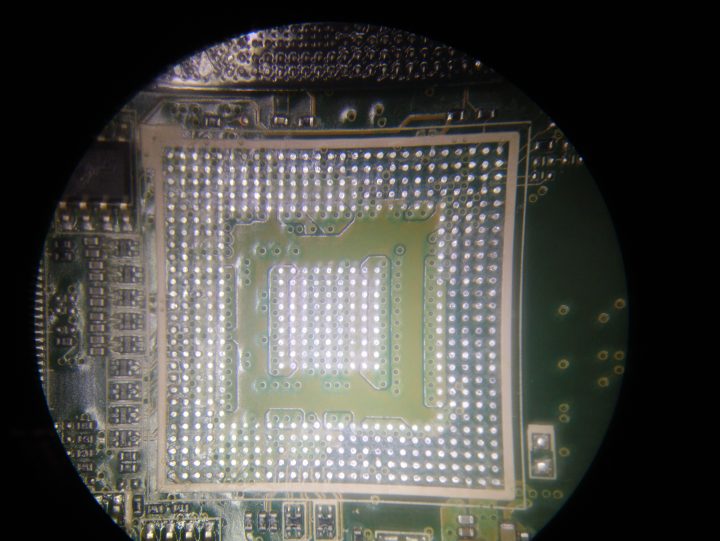
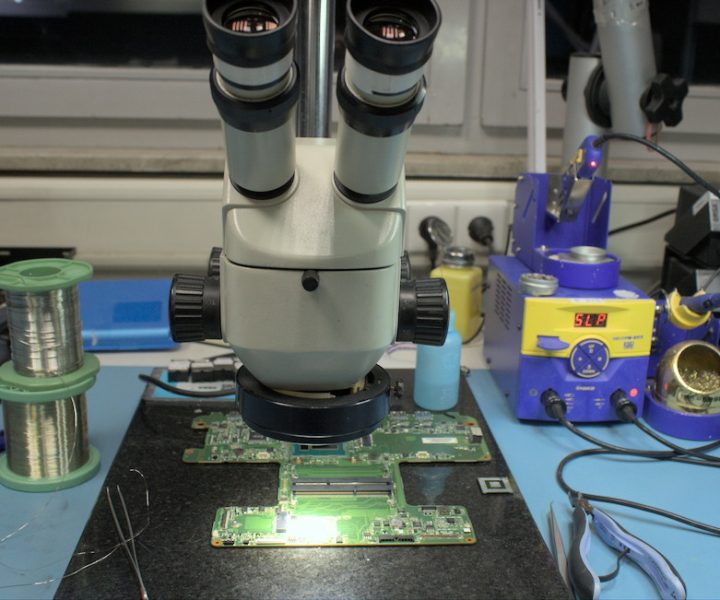
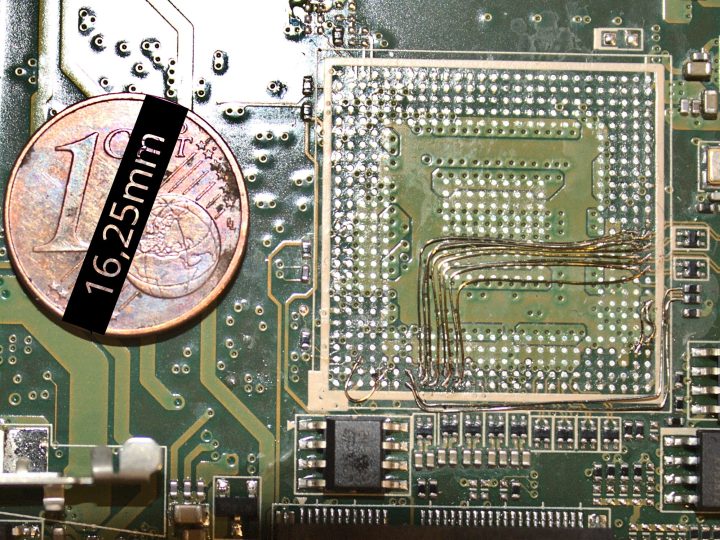
Resume
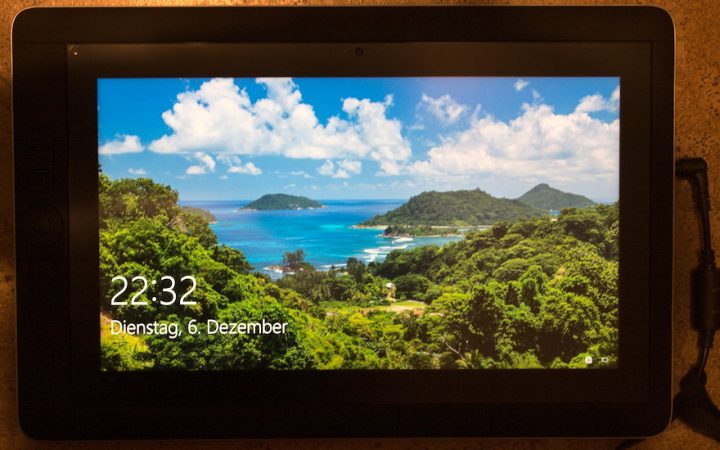
We’re really happy that we could fix this tablet for Carlo and his son. Now it is usable again. Not in companion mode but as a standalone device which is totally enough considering that it has the necessary hardware built in.
At the same time we’re shocked that probably most of these expensive tablets might die just because of this design flaw.
